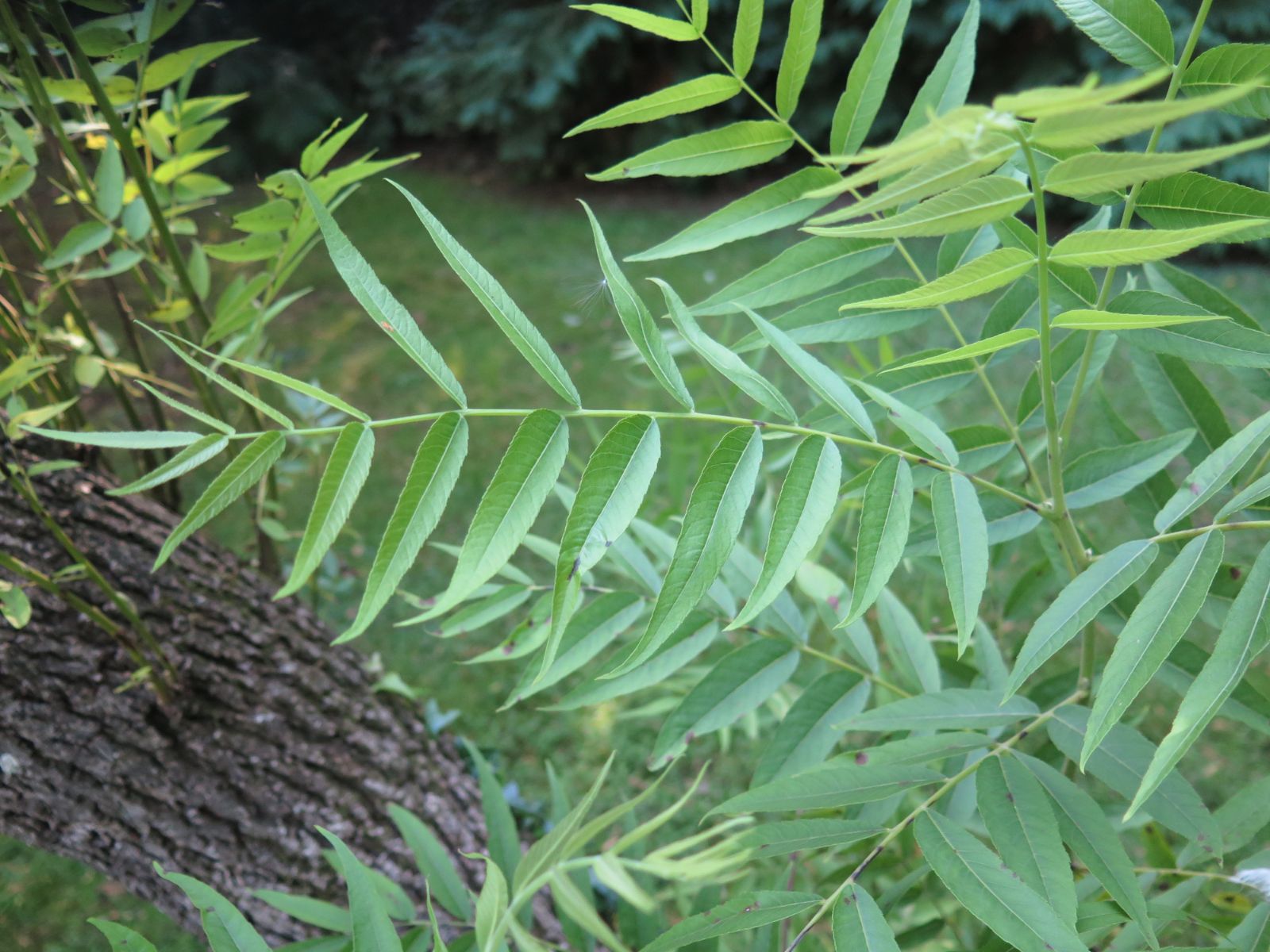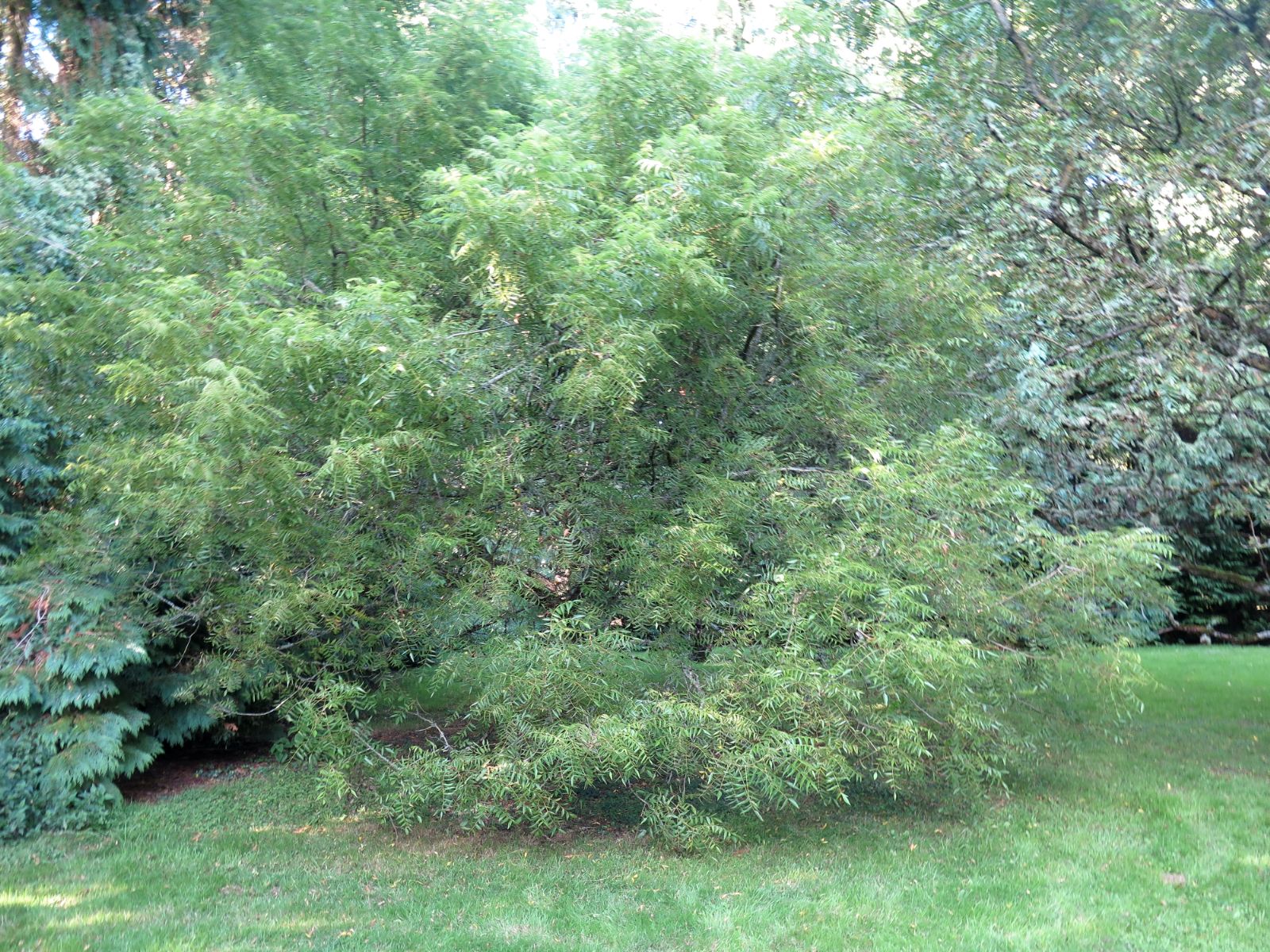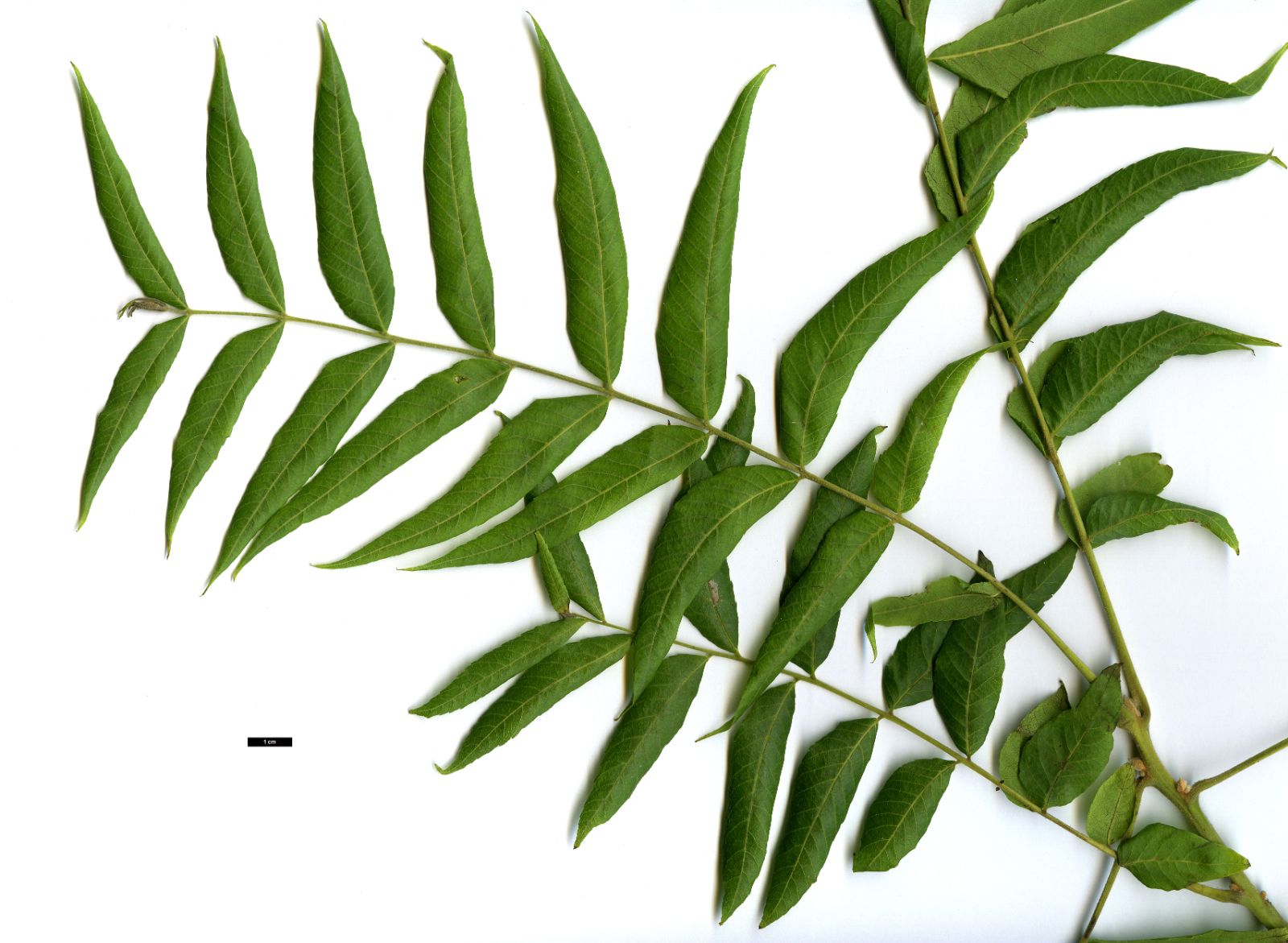Juglans microcarpa
Sponsor
Kindly sponsored by
a member of the International Dendrology Society
Credits
Julian Sutton (2019)
Recommended citation
Sutton, J. (2019), 'Juglans microcarpa' from the website Trees and Shrubs Online (treesandshrubsonline.
Genus
Common Names
- Texas Walnut
- Texas Black Walnut
- Little Walnut
- Dwarf Walnut
- River Walnut
- Nogal
- Nogalito
- Nogalillo
- Namboca
Synonyms
- Juglans rupestris Engelm. ex Torr.
Infraspecifics
Other taxa in genus
- Juglans ailantifolia
- Juglans × bixbyi
- Juglans californica
- Juglans cinerea
- Juglans cinerea × mandshurica
- Juglans hindsii
- Juglans hirsuta
- Juglans × intermedia
- Juglans major
- Juglans mandshurica
- Juglans mandshurica × regia
- Juglans Mexican Species
- Juglans mollis
- Juglans nigra
- Juglans × notha
- Juglans olanchana
- Juglans Paradox hybrids
- Juglans pyriformis
- Juglans × quadrangulata
- Juglans regia
- Juglans sigillata
- Juglans × sinensis
- Juglans steyermarkii
Shrub or small tree typically to 10 m, rarely considerably taller. Bark grey, smooth when young, later split into rough ridges. Brances stout and spreading. Branchlets usually with hairs russet at first, ageing grey, and with abundant lenticels; leaf scars large, heart-shaped with rounded corners, glabrous or bordered by poorly defined velvety zone; pith light to dark brown. Terminal buds globose to short-ovoid, not flattened, 3–5 mm. Leaves 12–29 cm; petiole 1–3(–4) cm; terminal leaflet usually small. Leaflets 17–25, lanceolate to narrowly lanceolate, usually somewhat curved, 5.2–6.3(–9.6) × 0.8–1.1(–2.2) cm, margins entire or toothed, apex long-acuminate; both surfaces glandular hairy at first, hairs sometimes becoming confined to veins by late season; lower surface with prominent tufts of hairs. Male catkins 3–7 cm; stamens 20–25(–35) per flower. Fruits 1–3, globose, 1.4–2.3 cm, smooth, with glandular hairs; nuts globose to depressed-globose, 1.1–1.7 cm, grooved, surface between grooves smooth. Flowering March–April(–June) in natural range (Whittemore & Stone 1997; Grimshaw 2004).
Distribution Mexico Chihuahua, Coahuila, and Nuevo León. United States Texas, New Mexico, Oklahoma, S. Kansas.
Habitat Along creeks and rivers; 200–2000 m.
USDA Hardiness Zone 6-7
RHS Hardiness Rating H5
Conservation status Least concern (LC)
The Texas Walnut is distinctive for its fine, graceful leaves and small, round fruits, the smallest of any Juglans. Despite its southerly range and tendency to produce shrubby specimens in the wild, it has proved quite widely hardy and is capable of making a shapely small tree. This drought tolerant plant for sunny positions deserves wider attention.
In its natural range, centred on Texas and adjoining parts of Mexico, it is a riparian tree growing along both permanent and seasonal watercourses. Larger trees have mostly been logged (Elias 1980) leaving predominantly shrubby and multistemmed specimens. A long taproot allows it to access the water table even when the streambed is dry (Tirmenstein 1990). Canopy damage from flash floods is a real risk in these habitats: while it appears to tolerate such events well (Tirmenstein 1990), it appears unusually ready to produce water shoots from the trunk and major branches (pers. obs.), from which a damaged canopy can easily be reconstructed.
While typical Juglans microcarpa is a distinctive plant, some wild populations seem intermediate between this and other species. Broader leaved plants may be the result of hybridisation with the more westerly J. major; trees intermediate between J. nigra and J. microcarpa are known from central Texas and southern Oklahoma (Whittemore & Stone 1997). None of this is very surprising, given the interfertility of walnut species.
Juglans microcarpa has dark, attractive wood in the manner of J. nigra, although Tirmenstein (1990) repeats a suggestion that it lacks physical strength, rings tending to separate when worked. The Kickapoo people used it for making pipe stems, bowls, bows and tool handles (Turner 2009); it has had a limited use in furniture and veneers. The small nuts have been eaten by indigenous people, but probably never cultivated. Turner (2009) reports that crushed leaves and bark were used for poison-fishing.
This species was first collected by the French-Mexican naturalist and physician Jean-Louis Berlandier in 1834, and named by him in 1850 (Bean 1981). The specific epithet refers to the small fruits. It was introduced to European cultivation in 1868 (Henry in Elwes & Henry 1906–1913), with further introductions to Kew in 1881 and 1894 by Charles Sargent of the Arnold Arboretum (Bean 1981).
There are two sizeable old specimens at Kew, one of 15 m × 65 cm (2010) and another of 18 m × 60 cm (2010), planted in 1906 and 1923 respectively (The Tree Register 2019); the former has a markedly curved trunk due to the proximity of other trees (Grimshaw 2004). There is a large coppiced specimen in the grounds of Tortworth Court Hotel, Gloucestershire (The Tree Register 2019).
There are few records from continental Europe, although there is a specimen at Gothenburg Botanical Garden in southern Sweden (Gothenburg Botanical Garden 2019). Outside Texas, it seems to be little grown in North America: Jacobson (1996) considered it ‘very rare in cultivation’, Dirr (2009) ignoring it entirely. It is, however, established in specialist collections on both the Pacific and Atlantic seaboards and in the Great Lakes area. The species is recorded in the Morton Arboretum, Illinois; Washington Park Arboretum, Seattle; the JC Raulston Arboretum, North Carolina and the US National Arboretum, Washington DC (Morton Arboretum 2019; University of Washington Botanic Gardens 2019; JC Raulston Arboretum 2019; US National Arboretum 2019).
'Dolly'
A good, unambiguously narrow-leaved plant distributed by the Dutch nursery De Smallekamp. To look for ways to distinguish it from ‘typical’ J. microcarpa is probably to miss the point. The name denotes a single clone; acquiring it avoids the risk of getting a hybrid among seed-raised trees. The nursery states that the walnuts are usually borne singly (De Smallekamp 2015); they are frequently in pairs or threes in the species generally, but this may only reflect local conditions. There is a young specimen in the Juglans collection at Upton Wold, Gloucestershire.










